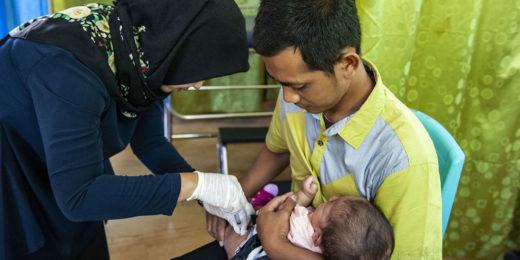The U.S. health care system is responsible for nearly 9% of the nation's total carbon emissions. These emissions are part of a larger climate crisis that harms human health, according to recent reports by the Lancet Countdown on Health and Climate Change and the World Health Organization.
Last summer and fall, a cohort of Stanford Medicine residents saw this reality firsthand as they treated patients whose health is affected by wildfires, among other climate-related health concerns.
"The connection between climate and health care has been at the forefront for many of us as we've seen patients impacted by heat and smoke, and we recognize that the health care industry makes a significant contribution to climate change," said dermatology resident Paige Wolstencroft, MD.
So, when this cohort of Stanford Dermatology residents had the opportunity to participate in a quality improvement project -- which operates in a framework used to systematically improve an organization's processes and systems. The idea was to improve an aspect of their medical practice in the spring of 2021, they focused on sustainability.
Wolstencroft and her colleagues in the Department of Anesthesiology and the Stanford Resident Safety Council, developed a project centered on reducing waste from the trays typically used during skin biopsies, under the mentorship of Bernice Kwong, MD.
Their efforts have already caught the attention of faculty in the School of Medicine who have advocated for more climate-friendly practices.
"As physicians, we have a moral and ethical obligation to decrease our carbon footprint," said Barbara Erny, MD, an adjunct clinical associate professor and proponent of integrating climate change education into all levels of physician training. "The work that Dr. Wolstencroft and her fellow residents are doing demonstrates that we can all make a difference by analyzing how we practice medicine and implementing changes in the clinic and hospital."
I spoke with Wolstencroft about the project and how others can apply the principles of quality improvement to "green" their medical practices. This conversation has been edited for clarity and length.
How did you decide what aspect of your practice to focus on?
We knew we wanted to create a project that would universally engage residents and be both sustainable and scalable for all our clinic sites. Given the frequency with which skin biopsies are performed, this seemed like a natural starting point. The potential impact of reducing biopsy tray waste cannot be emphasized enough. Through our initial waste audit of one week, we determined that 46 skin biopsies were performed, which leads to a conservative estimate of 2,392 skin biopsies performed each year by residents in our dermatology program alone.
How much waste did these biopsies generate?
We observed a lot of variability between clinical sites with respect to materials used as part of skin biopsy tray set-up, as well as the total amount of waste. We defined waste as any item on a skin biopsy tray that was opened and unused, and therefore discarded at the end of the procedure. Using this definition, we found that 84% of trays had at least one wasted item, and the average number of supplies wasted per tray was 7.2. Certain items -- including gauze -- were being wasted in higher frequency and volume than other supplies. This helped to target our intervention.
How did you go about translating this finding into action?
We realized that we would need individualized interventions for each clinical site, given the differences between supplies used, set-up and waste produced at different clinical sites.
And we recognized the importance of engaging all members of the clinic's team. We began with the skin cancer clinics and are incredibly grateful to the entire clinical team and administrative staff from this site who have worked with us to implement changes to optimize and define what's needed on a biopsy tray.
Through that collaboration, we have replaced the thick pads covering biopsy trays with a thinner paper and ordered smaller skin markers that are not individually packaged. We also created a workflow for biopsy tray set-up that minimizes the number of items on the tray at the beginning of a skin biopsy. We're conducting another waste audit to quantify the impact of our efforts.
Read the original Q&A published on the Stanford Center for Innovation in Global Health website. Learn more about health care sustainability at CIGH's web page, Sustainability Resources for Medical Providers.
Photo by Sakepaint






